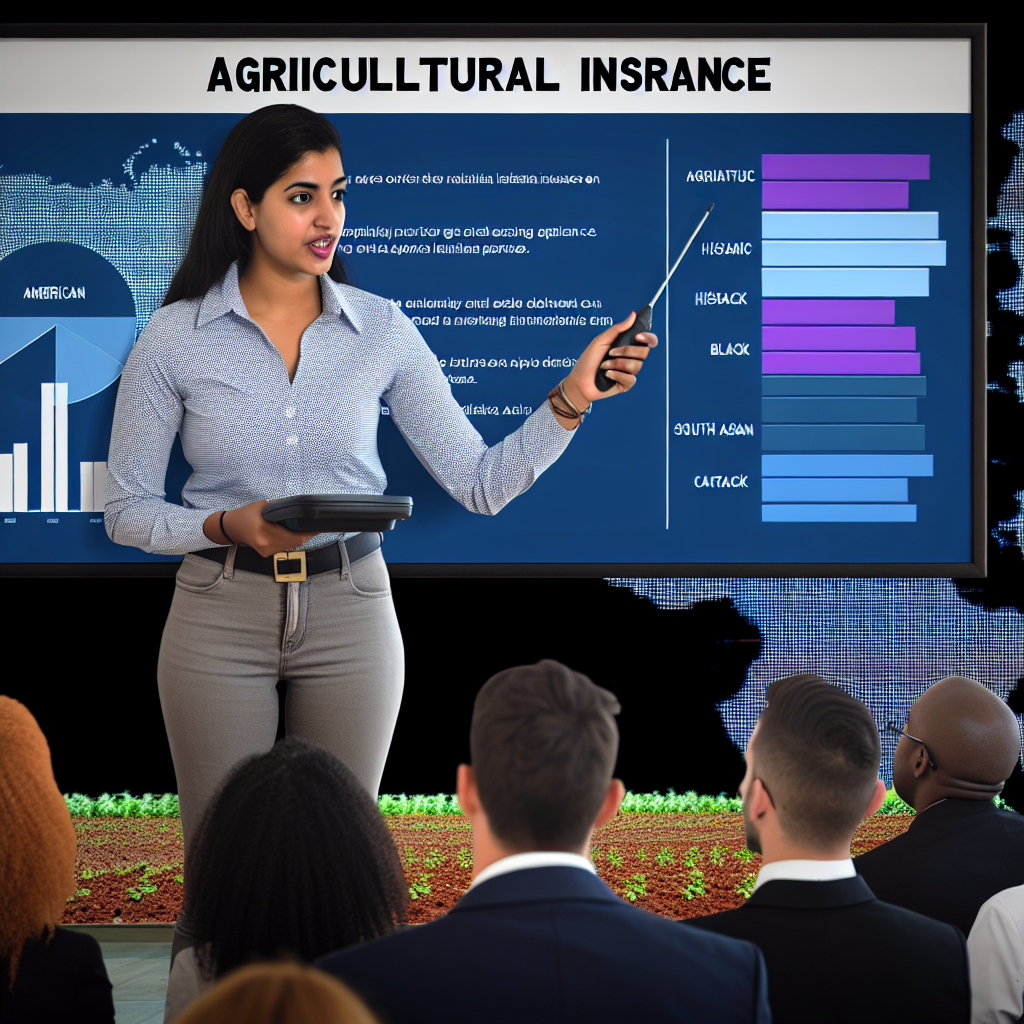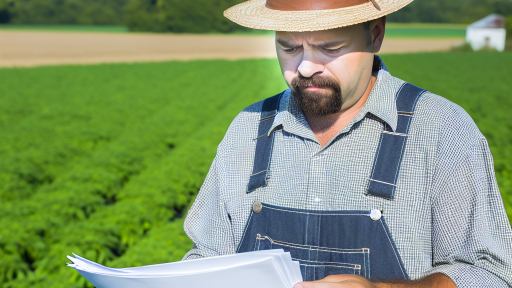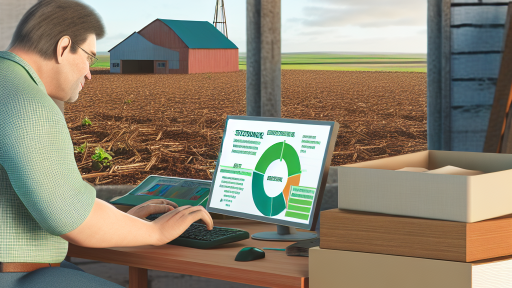Overview of Agricultural Insurance
Definition of Agricultural Insurance
Agricultural insurance protects farmers against potential losses.
It covers various risks related to farming activities.
This insurance can include crop, livestock, and property coverage.
Farmers rely on it to manage uncertainties in agriculture.
Additionally, it helps stabilize farm income during tough times.
Importance of Agricultural Insurance
Agricultural insurance plays a critical role in the farming sector.
It encourages investment in farming by reducing financial risks.
Farmers can adopt new technologies with the safety net of insurance.
This boosts productivity and enhances food security overall.
Moreover, it contributes to rural development and community stability.
Types of Agricultural Insurance
Several types of agricultural insurance exist to meet diverse needs.
- Crop insurance protects against losses due to natural disasters.
- Livestock insurance covers animals against illness and accidents.
- Property insurance provides coverage for farm buildings and equipment.
- Revenue insurance safeguards against fluctuations in income.
Farmers can choose policies tailored to their specific requirements.
How Agricultural Insurance Works
Agricultural insurance operates on the principle of risk pooling.
Farmers pay premiums to contribute to a collective fund.
In cases of loss, they receive compensation based on their policy.
Transform Your Agribusiness
Unlock your farm's potential with expert advice tailored to your needs. Get actionable steps that drive real results.
Get StartedAssessing the risk and determining the premium is essential.
This process involves multiple factors, including crop type and location.
Historical Context: Evolution of Government Policies on Agricultural Insurance
Early Developments in Agricultural Insurance
Governments initially had minimal involvement in agricultural insurance.
Farmers relied on personal savings and local cooperatives.
As agricultural practices evolved, risks became more apparent.
This shift led to government interest in supporting farmers.
Introduction of Federal Initiatives
The 1930s marked a significant change in agricultural policy.
During the Great Depression, the U.S. government introduced safety nets.
Crops and livestock insurance programs were established.
This provided essential support to struggling farmers.
Expansion of Agricultural Insurance Programs
By the 1950s, farm income stabilization became a priority.
More comprehensive insurance options were created.
These programs aimed to cover a wider range of risks.
Various federal programs were also launched to enhance participation.
Emergence of Subsidized Insurance
Subsidies became a pivotal part of agricultural insurance after the 1980s.
The government began to cover a portion of premiums for farmers.
This encouraged more farmers to purchase insurance policies.
Consequently, overall participation rates significantly increased.
Modern Reforms and Technological Integration
The turn of the 21st century saw modernization in insurance policies.
Advancements in technology paved the way for better risk assessment.
Farmers now use data analytics for informed decision-making.
Government policies began promoting technological integration.
Current State of Agricultural Insurance Policies
Today, agricultural insurance plays a crucial role in sustainability.
Government policies are constantly adapting to changing conditions.
Showcase Your Farming Business
Publish your professional farming services profile on our blog for a one-time fee of $200 and reach a dedicated audience of farmers and agribusiness owners.
Publish Your ProfilePolicies focus on climate resilience and risk mitigation strategies.
Farmers receive support that reflects modern challenges.
Key Government Policies Impacting Agricultural Insurance
Subsidization Programs
Governments often support agricultural insurance through subsidization programs.
These programs lower premiums for farmers, making coverage more accessible.
For instance, the U.S. Farm Bill provides significant funding for crop insurance.
This financial assistance encourages farmers to protect their crops from risks.
Furthermore, it stabilizes farmer incomes during adverse weather conditions.
Regulatory Frameworks
Regulatory frameworks shape the agricultural insurance market significantly.
Governments establish rules that guide policy formation and claims processing.
For example, the Federal Crop Insurance Corporation oversees many U.S. policies.
This regulatory body ensures fairness and transparency in premium rates.
Additionally, it facilitates compliance with international trade agreements.
Disaster Assistance Programs
Disaster assistance programs play a critical role in agricultural insurance.
When catastrophic events occur, these programs provide immediate relief.
For instance, the Emergency Relief Program offers funds to affected farmers.
This assistance can cover losses not accounted for by regular insurance.
As a result, farmers can recover more quickly from unexpected disasters.
Research and Development Initiatives
Investment in research and development enhances agricultural insurance products.
Governments fund research to better understand risks specific to agriculture.
For example, studies on climate change impact contribute valuable data.
This knowledge improves insurance offerings tailored to particular conditions.
Ultimately, it leads to more effective risk management strategies for farmers.
Public Awareness Campaigns
Public awareness campaigns educate farmers about available insurance options.
These initiatives help farmers understand the benefits of coverage.
For instance, the USDA promotes various insurance programs through outreach.
Moreover, these campaigns can highlight best practices for claims filing.
Informed farmers are more likely to enroll in necessary insurance plans.
Delve into the Subject: Guide to Renewable Energy Grants for Farmers
The Role of Subsidies in Shaping Agricultural Insurance Markets
Understanding Agricultural Subsidies
Agricultural subsidies play a crucial role in modern farming.
They provide financial support to farmers, ensuring stability in income.
Moreover, these subsidies incentivize farmers to adopt insurance policies.
Consequently, farmers are more likely to protect their crops from risks.
Types of Agricultural Subsidies
Various types of agricultural subsidies exist in the market.
Direct payments are common; they provide income support directly to farmers.
Additionally, crop insurance subsidies help lower insurance premiums.
Another type includes disaster assistance, providing support during catastrophic events.
Farmers rely on these subsidies to mitigate financial losses.
Impact of Subsidies on Insurance Markets
Subsidies significantly influence agricultural insurance markets.
They encourage farmers to purchase insurance against various risks.
This support reduces the financial burden on farmers during crises.
Showcase Your Farming Business
Publish your professional farming services profile on our blog for a one-time fee of $200 and reach a dedicated audience of farmers and agribusiness owners.
Publish Your ProfileMoreover, the availability of subsidies can stabilize market premiums.
Overall, subsidies create a more predictable and manageable insurance landscape.
Challenges in the Current System
Despite their benefits, subsidy programs face several challenges.
For instance, improper allocation of funds can harm small farmers.
Additionally, large agribusinesses may disproportionately benefit from subsidies.
This imbalance can lead to market distortions and unfair practices.
Furthermore, bureaucratic complexities can hinder effective distribution.
Future Directions for Agricultural Subsidies
The future of agricultural subsidies hinges on policy reforms.
Governments must strive to create equitable distribution mechanisms.
Additionally, incorporating sustainability goals into subsidy programs is vital.
These steps will ensure that subsidies support the entire agricultural sector.
Thoughtful reforms will enhance the effectiveness of subsidies.
Discover More: The Role of Food Safety Standards in Farm Management
Risk Management: How Policies Affect Farmers’ Insurance Decisions
Understanding Government Influence
Government policies significantly impact agricultural insurance options.
Farmers often adjust their strategies based on these policies.
For instance, subsidies can encourage farmers to purchase insurance.
This behavior leads farmers to feel more secure in their investments.
Moreover, policies that promote risk management education can enhance awareness.
The Role of Subsidies
Subsidies are a crucial component of agricultural insurance.
They lower the cost of premiums for farmers.
Consequently, this incentivizes more farmers to seek coverage.
For example, the Federal Crop Insurance Program offers significant support.
This support helps protect farmers from losses due to natural disasters.
Impact of Regulatory Changes
Regulatory changes can shift the agricultural insurance landscape.
Changes may involve new requirements for coverage specifics.
Farmers need to stay informed about these updates.
Additionally, compliance with regulations can affect their decisions.
Therefore, understanding regulations is vital for effective risk management.
Education and Awareness Programs
Government initiatives often include educational programs.
These programs can teach farmers about available insurance options.
Moreover, increased awareness leads to more informed decisions.
Farmers who understand their options are less likely to take risks.
Overall, education empowers farmers in their insurance choices.
Regional Variations in Policy Impact
The impact of government policies varies by region.
Climate and crop types influence insurance needs.
For instance, drought-prone areas may require different coverage than flood-prone regions.
Consequently, policies must address local conditions effectively.
Farmers benefit from tailored solutions based on their specific circumstances.
Discover More: Evaluating Alternatives To Traditional Pesticides

Case Studies: Successful Government Policy Implementations in Agriculture
Subsidization of Crop Insurance
In the United States, the government implemented a crop insurance program to support farmers.
Showcase Your Farming Business
Publish your professional farming services profile on our blog for a one-time fee of $200 and reach a dedicated audience of farmers and agribusiness owners.
Publish Your ProfileThis program lowers premiums for farmers, making insurance more accessible.
As a result, more farmers participate in the program, reducing their financial risk.
Case studies show that states like Iowa and Nebraska have benefited significantly.
Farmers report increased productivity and resilience to natural disasters.
Disaster Assistance Programs
The Federal Emergency Management Agency (FEMA) offers disaster assistance for agricultural losses.
These programs provide immediate relief after catastrophic events like hurricanes or droughts.
For example, after Hurricane Harvey, Texas farmers received financial aid quickly.
This support helped them recover and rebuild their operations efficiently.
Pesticide and Fertilizer Regulations
Government policies on pesticide and fertilizer use have influenced agricultural practices.
For example, the European Union enforces strict regulations to promote environmental safety.
Farmers are encouraged to adopt sustainable practices through incentive programs.
Consequently, more farmers shift to organic and eco-friendly farming methods.
Research and Development Funding
The government allocates funds for agricultural research and development programs.
Institutions like the USDA fund projects that improve crop yields and pest resistance.
One notable success is the development of drought-resistant corn varieties.
This funding enables innovations that benefit farmers and the agricultural sector.
Delve into the Subject: The Role of Rural Development Policies in Enhancing Farm Sustainability
Challenges Facing Agricultural Insurance Due to Policy Changes
Impact of Regulatory Changes
Regulatory changes can significantly affect agricultural insurance.
Farmers face uncertainty when policies shift unexpectedly.
This unpredictability complicates the planning process for producers.
Consequently, changes in crop and livestock insurance regulations pose financial risks.
Economic Factors Influencing Policies
Economic downturns lead governments to reevaluate funding for insurance programs.
Reduction in government subsidies directly impacts insurance affordability.
Farmers may struggle to afford coverage when premium costs increase.
Moreover, the competition among insurance providers can vary based on economic conditions.
Environmental Policies and Insurance
Environmental policies create challenges for agricultural insurance models.
Climate change has resulted in more frequent natural disasters.
Insurance models must adapt to assess these emerging risks accurately.
In fact, some policies incentivize sustainable practices, complicating traditional coverage frameworks.
Technological Changes and Adaptation
Technological advancements influence the way agricultural insurance operates.
Data-driven models enhance risk assessment procedures for insurers.
However, farmers must adapt to these technological changes quickly.
Otherwise, they may fall behind in securing adequate coverage.
Stakeholder Perspectives
Various stakeholders have differing views on agricultural insurance policies.
Farmers often advocate for stable, predictable funding sources.
Insurance companies, on the other hand, prioritize risk management strategies.
Consequently, negotiations among these parties can impact policy effectiveness.
Future Trends: Predicting the Impact of Upcoming Government Policies on Agricultural Insurance
Evolving Legislative Landscape
Government policies are set to evolve significantly in the upcoming years.
These changes will likely impact how agricultural insurance is structured.
Additionally, new regulations may introduce fresh requirements for farmers.
Showcase Your Farming Business
Publish your professional farming services profile on our blog for a one-time fee of $200 and reach a dedicated audience of farmers and agribusiness owners.
Publish Your ProfileConsequently, understanding these legislative shifts is crucial for stakeholders.
Emerging Trends in Agricultural Policies
Innovative policies could emerge to address climate change challenges.
Government initiatives may offer incentives for adopting sustainable practices.
Such changes may lead to increased demand for climate-risk insurance products.
Stakeholders need to prepare to embrace these new trends.
Adapting Insurance Models
The insurance industry must adapt to new government regulations.
Flexibility will be key in adjusting policies to comply with changing laws.
Insurers might need to innovate coverage options for farmers.
Moreover, technology can assist in reinforcing these adaptive strategies.
Impact on Risk Assessment
Upcoming policies could influence how risks are assessed in agriculture.
For instance, more emphasis may be placed on sustainability metrics.
Insurers will need to incorporate these factors into their assessments.
As a result, risk management strategies may become more complex.
Collaboration Between Sectors
Future agricultural insurance policies may foster collaboration among stakeholders.
Government bodies, insurers, and farmers could work more closely together.
This partnership may enhance knowledge-sharing about best practices.
Overall, such collaborations could lead to more robust insurance solutions.
Monitoring and Evaluation
Monitoring new policy impacts on agricultural insurance will be vital.
Stakeholders should regularly evaluate the effectiveness of implemented policies.
Feedback mechanisms can help in refining insurance products over time.
Furthermore, continuous learning will foster resilience in the agricultural sector.
Additional Resources
Agricultural Subsidies | National Agricultural Library
Agricultural Policy Change in China: Trip Overview by U.S. Delegation




